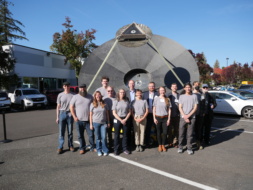The emerging fusion energy industry has attracted $6B+ in total investment, including $1.4B raised last year, the Fusion Industry Association (FIA) wrote in its annual state-of-the-market report.
Out of 40 fusion startups surveyed by the association, five companies, including Helicity Space, NearStar, Princeton Fusion Systems, and Avalanche, said space propulsion is one of their primary markets.
“Investors see that fusion is moving from the scientific lab, national labs, and universities into the marketplace,” FIA’s CEO Andrew Holland told Payload. “It’s becoming something that is on a commercially-relevant timescale that investors see as a way to make money.”
Physics class: Nuclear fusion is the process of fusing two atoms (typically hydrogen) together to form a new element (typically helium). The rearrangement releases a tremendous amount of energy.
- Although still in the early days, harnessing fusion could mean a limitless source of energy for the electric grid and a powerful means of in-space propulsion that opens the solar system for exploration.
A shortcut to Mars: Fusion propulsion is not intended for Earth to LEO transport. It could be most useful for interplanetary travel, where its extraordinarily high energy density could enable spacecraft to go farther, faster.
Looking specifically at Earth’s neighbor, harnessing fusion propulsion could cut the travel time to the Red Planet by 75%, allowing spacecraft to make the trip in just a few months. For comparison, the journey for NASA’s Perseverance rover took about seven months.
“It opens up the solar system to human exploration and our ability to get people and payloads to Saturn’s moons, the asteroid belt, and all these sorts of interesting things,” said Holland.
How it works: There are numerous ways to harness fusion for space propulsion, but the most common design is a pulsed magneto-inertial fusion rocket.
- A plasma gun fires along a track into a magnetic confinement field, triggering a nuclear reaction. The rocket design resembles the spacecraft from 2001: A Space Odyssey.
- The key to the reaction is creating a confined environment with temperatures reaching millions of degrees.
- Fusion power is released in short bursts, providing direct thrust as exhaust out a nozzle.
Hold your horsepower: While there have been significant advancements toward producing fusion energy, most notably with December’s net energy breakthrough at Lawrence Livermore National Lab, hurdles remain before engineers can harness it. According to an FIA survey, most industry insiders believe the technology will first send electricity to the grid in 2031-2035.




